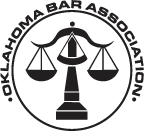Updated April 6, 2021
The FFCRA leave benefits are no longer mandatory as of December 31, 2020. Under the American Rescue Plan, the FFCRA leave benefits were expanded and extended through September 30th, 2021. Eligible employers have the option to offer these benefits to their work force on a voluntary basis in order to claim tax credits. Read more in our updated post HERE
The Families First Coronavirus Response Act (FFCRA) was signed into law late in the evening of March 18, 2020. This Act is in response to the coronavirus pandemic in the United States and addresses several issues including Emergency Paid Sick Leave and Emergency Family and Medical Leave. This Act is Phase 2 of an expected three phase plan with Phase 3 currently being drafted in the Senate. As this legislation continues to evolve and grow, MVP is dedicated to keeping you up to date on the implications to employers affected by the FFCRA.
MVP goes into more details on the Emergency Family and Medical Leave Expansion Act and Emergency Paid Sick Leave Act below. Some important details to note: the FFCRA will take effect within 15 days of March 18, 2020, employers of health care providers and emergency responders can exclude their employees from certain provisions of the Act, and subject to forthcoming Treasury Department regulations and conditions, employers should use tax credits – up to 100% of paid leave caps – for the amount of leave provided.
Emergency Paid Sick Leave Act
The Act requires private employers engaged in interstate commerce with fewer than 500 employees and all public employers to provide full-time employees with up to 80 hours of emergency paid sick leave and part-time employees with proportional paid leave at the average number of hours worked over a two-week period if the employee cannot work or telework for the following reasons:
- The employee is subject to a Federal, State, or local quarantine or isolation order related to COVID-19.
- The employee has been advised by a health care provider to self-quarantine due to concerns related to COVID-19.
- The employee is experiencing symptoms of COVID-19 and seeking a medical diagnosis.
- The employee is caring for an individual who is subject to a quarantine order as described above.
- The employee is caring for a child if the school or place of care has been closed, or the child care provider of the child is unavailable, due to COVID-19 precautions.
- The employee is experiencing any other substantially similar condition specified by the Secretary of Health and Human Services in consultation with the Secretary of the Treasury and the Secretary of Labor.
When the employee takes leave for the first three reasons, the employee is entitled to his or her regular rate of pay, up to $511 per day or $5,110 in total. When the employee takes leave for the reasons 4-6, required paid leave is limited to $200/day or $2,000 in total.
The paid emergency sick leave required by the Act is in addition to any existing paid leave provided by the employer and does not diminish the employee’s rights or benefits under any law, bargaining agreement or existing policy to the employee. Employers CANNOT require employees to use existing paid leave before the employee uses paid emergency sick leave under the Act. Employees may use existing leave, if they choose, to make up any shortage under the cap for their regular rate of pay.
The Act prohibits retaliation against any employee who takes leave under the Act or pursues a complaint or testifies regarding a violation of the Act and is subject to suit under the Fair Labor Standards Act (FLSA).
Covered employers who fail to provide the required paid emergency sick leave shall be considered to have failed to pay minimum wages under the FLSA and subject to suit and penalties under the FLSA.
Emergency Family and Medical Leave Expansion Act
This section of the FFCRA amends the Family Medical Leave Act (FMLA) to create an additional eligible reason for leave, Public Health Emergency Leave, for all public employers and private employers with fewer than 500 employees. This additional reason for leave covers employees who are not able to work or telework because of closures of school or child care, due to a public health emergency, that affects their need to care for their children under the age of 18.
The provisions of this Act also change the definition of both “eligible employee” and “employer” ONLY for Public Health Emergency Leave. An “eligible employee” means any employee employed at least 30 days and “employer” means an employer with fewer than 500 employees. This Act gives the Department of Labor the authority to issue regulations to exclude certain health care providers and emergency responders from the definition of “eligible employee”, and to exempt small businesses with fewer than 50 employees if the requirements of the provisions would jeopardize the viability of the business.
Employer coverage and employee eligibility qualifications still apply to the 5 other qualifying conditions as stated in FMLA. FMLA refresher guide here.
Eligible employees would be entitled to up to twelve (12) weeks of family medical leave but unlike all other leave under the FMLA, Public Health Emergency Leave is paid leave beginning after ten days of unpaid leave. Please note, the employee, at his or her option, may substitute (meaning concurrently use) existing paid leave: vacation time, sick leave, PTO, personal days; or other paid leave, including sick leave under the Emergency Paid Sick Leave Act, during the initial 10 days of unpaid leave.
After the first ten days of leave, the employer must pay the employee at least two-thirds of his or her regular pay for the hours the employee would normally be scheduled to work, up to $200 a day with a cap at $10,000 in total. The employee may elect to supplement the employer provided paid leave with available existing paid leave to meet up to 100% of his or her regular pay.
The amendment to the FMLA provides some limited relief for employers with fewer than 25 employees in restoring the employee to work if the employee’s position no longer exists due to economic conditions affecting employment caused by the public health emergency while the employee was on leave, so long as the employer makes reasonable efforts to provide an equivalent job, and, if is unable to place the employee, contacts the employee within a year of the need for leave.
Important to note, Public Health Emergency Leave may not be taken on an intermittent basis and it is counted against an employee’s FMLA leave entitlement for employers already subject to FMLA.
The Emergency Family and Medical Leave Expansion Act includes a provision barring private suits by employees of employers with fewer than 50 employees for violation of FMLA rights, but it retains the Department of Labor’s ability to enforce the Act on behalf of employees.
Finally, for “eligible employees” of covered employers, the standard FMLA leave entitlements remain in place, but those entitlements do not include paid leave – unless they also fall under either the provisions of the Emergency Family and Medical Leave Expansion Act or Emergency Paid Sick Leave Act described below.
Please contact Chuck Dunlay, Greg Goheen or Ryan Denk with questions about the Families First Coronavirus Response Act or any employment related questions you may have.
Disclaimer and warning: This information was published by McAnany, Van Cleave & Phillips, P.A., and is to be used only for general informational purposes and should not be construed as legal advice or legal opinion on any specific facts or circumstances. This is not inclusive of all exceptions and requirements which may apply to any individual claim. It is imperative to promptly obtain legal advice to determine the rights, obligations and options of a specific situation.







